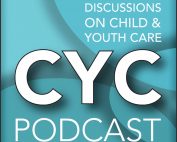EVERY VOICE COUNTS
The Verbatim Formula is a participatory research project for care-experienced young people. It uses verbatim theatre techniques, listening and dialogue to work with young people, care leavers, social workers, and universities.
We aim to work with young people to make care and education better.
“I’ve literally become a catalogue of statistics, and just irrelevant facts and info. And it’s dehumanizing to be honest. If adults don’t really view you as a human then how can you view yourself? Right now, according to the system, kids have become just another number, another statistic, and it’s not whether a child is being cared for, it’s whether they’re being dealt with.”
Leah, 14 years old, 2015
WHY VERBATIM
WHY VERBATIM
In The Verbatim Formula we use headphone performance to make audio testimonies that can be shared safely and anonymously. To make the testimonies, participants record interviews with each other, and with facilitators. The content of the recordings are chosen by participants, edited, and loaded up onto MP3 players or iPods. A performer then listens back to the testimonies through personal headphones, and relays the original recording to an audience by paying minute attention to the words on the audio, and repeating them accurately and respectfully. The identity of the original speaker remains anonymous, and this often means that their words can be heard with special attention. Our performances intend to create spaces for reflection and dialogue, not defensiveness or blame.
“It makes you really listen, makes you listen in a slightly different way, makes you take a step back from what you’re expecting to hear if you like.So I think I listened better, I think I listened with a more open ear if that makes sense.”
Rash, social worker
OUR METHOD IN A NUTSHELL
OUR METHOD IN A NUTSHELL
OUR METHOD IN A NUTSHELL
OUR METHOD IN A NUTSHELL
WHY VERBATIM
WHY VERBATIM
In The Verbatim Formula we use headphone performance to make audio testimonies that can be shared safely and anonymously. To make the testimonies, participants record interviews with each other, and with facilitators. The content of the recordings are chosen by participants, edited, and loaded up onto MP3 players or iPods. A performer then listens back to the testimonies through personal headphones, and relays the original recording to an audience by paying minute attention to the words on the audio, and repeating them accurately and respectfully. The identity of the original speaker remains anonymous, and this often means that their words can be heard with special attention. Our performances intend to create spaces for reflection and dialogue, not defensiveness or blame.
“It makes you really listen, makes you listen in a slightly different way, makes you take a step back from what you’re expecting to hear if you like.So I think I listened better, I think I listened with a more open ear if that makes sense.”
Rash, social worker
OUR LAST TWEETS
OUR LAST TWEETS







